Why write about a Baja RV adventure right now? Because I need to keep sight of my travel dreams. Maybe you are in the same boat. The uncertainty surrounding the pandemic is slowly eroding our collective ability to be excited by travel plans. It will pass – and this post will be here to help you get the most out of your own adventure when the time comes. For now, consider it the perfect excuse to dream a little!
So, hop on board as we share driving tips, camping options and our thoughts about travel in Baja California, Mexico. In part one of this three-part Baja RV adventure, we head down from the Calexico/Mexicali border crossing to our first camp: San Felipe.
Disclosure: This post contains affiliate links. If you buy something from one of our affiliates, we receive a small commission at no extra charge to you. We appreciate your support!
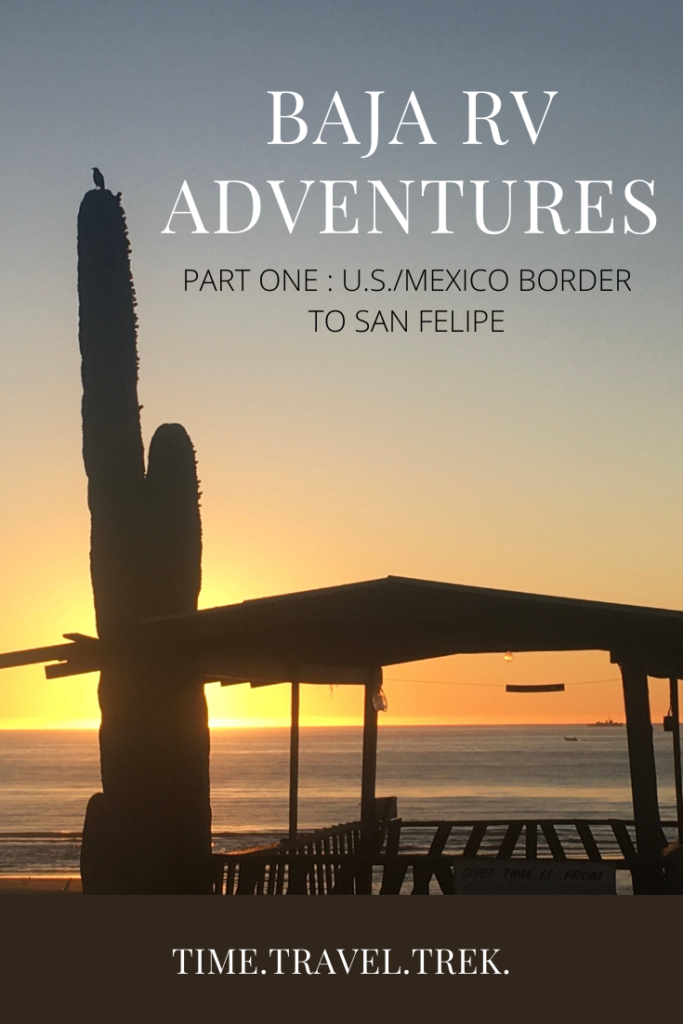
Table of Contents
Why a Baja RV Adventure?
The question is: why not? Go because the weather is beautiful. Do it because the desert environment is unique and varied. There’s a wide array of ocean adventures from wildlife watching to snorkeling to fishing to kayaking. Food and entertainment are cheaper in Mexico. Historic sites abound. Mexican people are warm and inviting. And it’s always a fun challenge to venture into a different culture where English is not the first language on the tip of everyone’s tongue.
Planning a trip with your RV in the next little while?
Check out this post of the Best RV Travel Apps!
In Case You Were Wondering: “Baja” means “lower” in Spanish. The Baja peninsula is made up of two Mexican states – Baja California Norte) and Baja California Sur. “Norte” means “north” and “Sur” means “south.” Mexicali is the capital of BC Norte and La Paz is the capital of BC Sur.
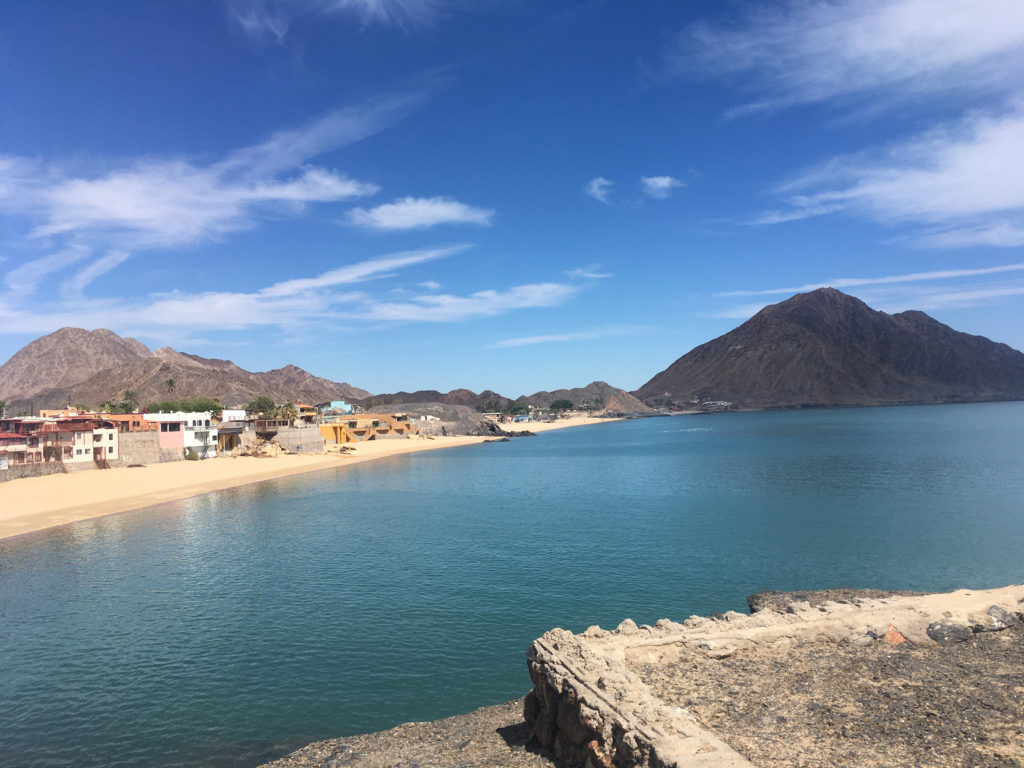
We’ve been to Baja on several different trips now, but there is a real freedom that comes when you have travel in your own RV. You can stop wherever there is a campground beside a beach. It’s possible to stay in places that don’t have hotels. And you can make your own meals when you are tired of eating out. All in all, it’s a fun and affordable way to travel in Baja California.
History by the Numbers
11,000 Number of years people have inhabited the Baja peninsula
1530s Arrival of Spaniards on the peninsula
1697 Jesuits set up first permanent mission in Loreto
1822 Baja California becomes independent of Spain
1846 Start of Mexican War
1848 California is given to U.S. & lower California (Baja) is given to Mexico
1930 Year Baja California is divided into the northern and southern regions
1952 On December 31stof this year, Baja Norte became Mexico’s 29th state
1973 1,708-kilometre (1,061 mi) highway connects Tijuana & Cabo San Lucas
1974 Baja California Sur enters statehood
*You can find more dates, facts and figures about Baja’s past here.
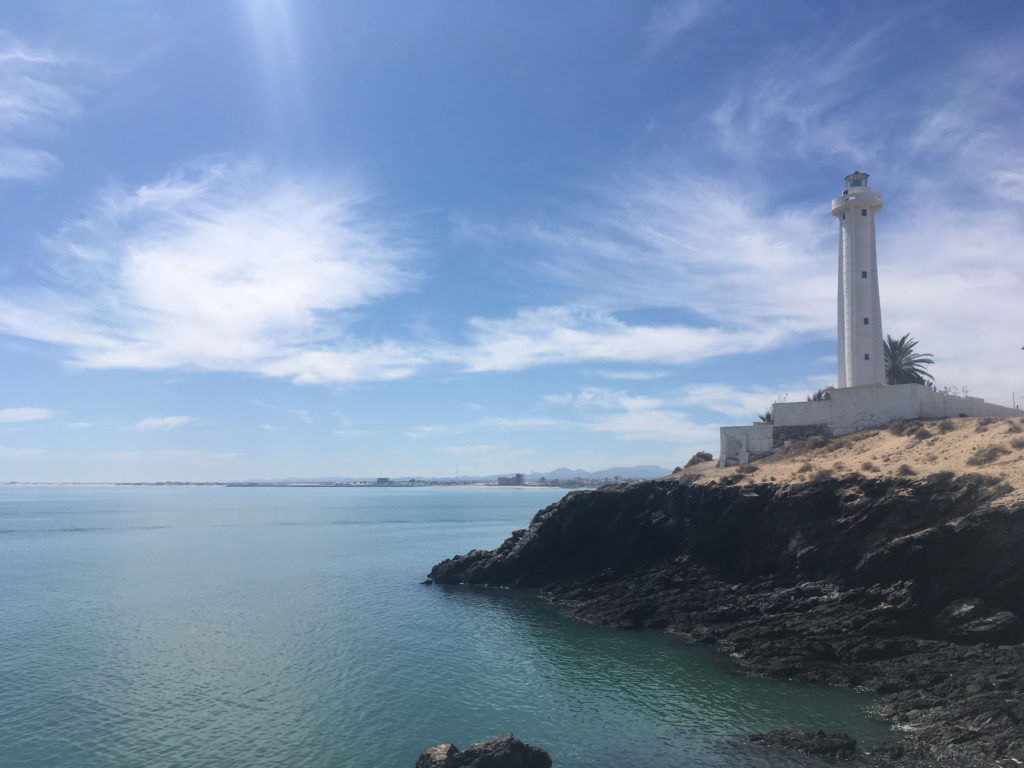
Is it Safe?
This is probably the number one question people ask: Is it safe to drive your RV in Mexico after the pandemic is over? The answer is yes… for the most part. RVers should note that he roads are narrow with little to no shoulder. Drivers of large RVs should have confidence in their abilities to drive narrow roads. Border towns can be confusing to navigate and the risk of getting lost without a good map or online app is high.
To be honest, criminal activities – from theft to kidnapping to drug-related operations – exist. There are parts of Mexico that you definitely want to avoid (check the Government of Canada Travel Advisory Page and the U.S Department of State’s Travel Warning for Mexico for current advisories). But – and here’s where you need to take a reality check – the same could be said for some large urban centres in Canada and the U.S. For the most part, RV travel to Baja California, Mexico is as safe as it is here. We’ve driven down twice now and never had a single issue.
Love RVing or know someone else who does? Check out our Best RV Camping Gift Ideas!
Military Checkpoints
There are numerous semi-permanent and temporary road checkpoints in Mexico. They are looking for guns, drugs and other illegal activities. As long as you don’t have anything illicit, you have nothing to worry about. Take off your sunglasses, smile, be courteous and do whatever is asked of you. Have all required travel documents handy in case they ask to see them.
Required Travel Documents for Your Baja RV Adventure
- Passport
- Driver’s licence
- Mexico car insurance
- Vehicle (and – if applicable – trailer) registration
Our Baja RV Adventure Begins
We left Yuma at 9:45 a.m., driving west to the east border crossing in Calexico. There are two border crossings here, east and west. The west crossing is more for commercial traffic. Pulling up we were directed to pull over. The border guard asked to see the trailer registration papers and checked the serial number carefully. A dog and handler walked around the truck and trailer – and even hopped inside briefly when Brad unlocked and opened the trailer door.
With a nod we were directed ahead to a parking area. Walking back to the main building, we go inside and fill out the Immigration form. The staff member keeps our passports while we walk the form over to the bank (Banjercito) to pay the fee. The bank teller stamps the form, we walk it back to the office to be stamped again. We get our copy with our passports. It’s a time-consuming but necessary step to cross into Mexico.
South on Highway 5
Before taking off, we load Google maps on the phone and plot a route to San Felipe. Following the map, we painlessly find our way through the maze of Mexicali streets and onto Federal Highway 5. This route opened in February of 2020. Before then, Highway 1 was the only through option.
It’s an easy drive to San Felipe after leaving the border zone. There is little traffic and miles and miles of straight road through salt flats. We didn’t stop at Rio Hardy – which is the first tourist destination along this stretch of road – but will definitely check it out on our next trip down the peninsula. The river is popular with anglers and kayakers. Rio Hardy flows into the delta of the Colorado River which empties into the Sea of Cortez.
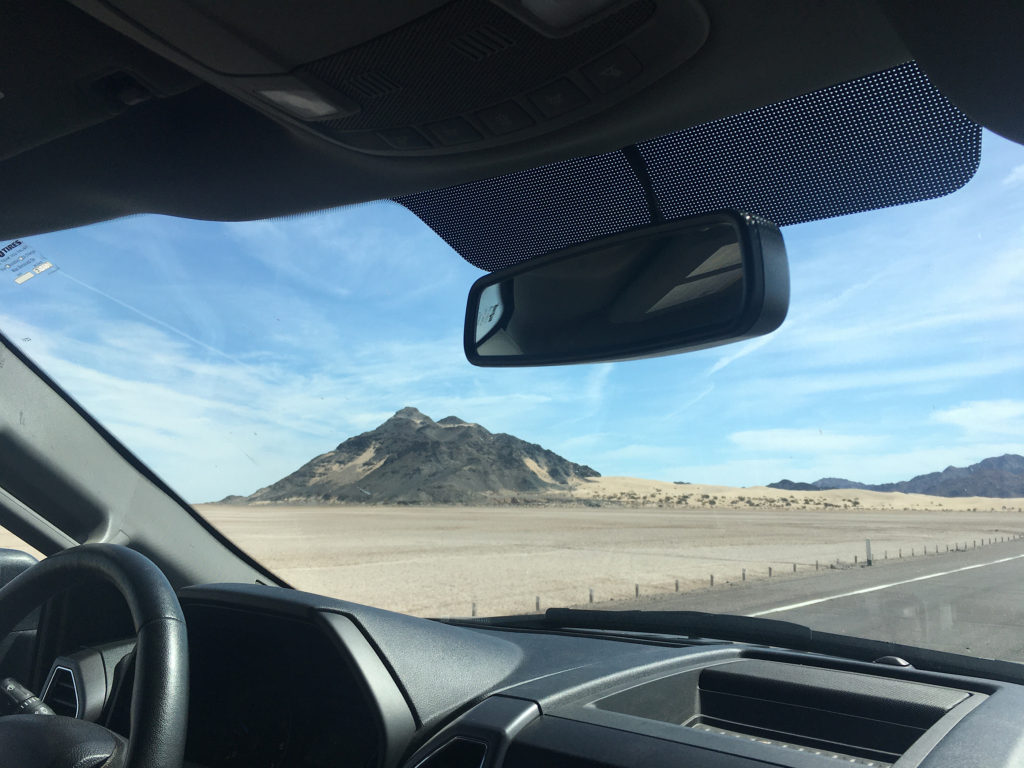
Continuing south, brown and red volcanic mountains rise seemingly out of nowhere. There is little sign of habitation, no gas stations or tiendas, few side roads and not much vehicle traffic – but there are hundreds of discarded tires in the ditches. We jokingly dubbed it was the Tired Highway.
About 50 kilometres (30 mi) north of San Felipe we pulled up to the first permanent military checkpoint that dot the highways throughout Baja. The guards asked to see inside canopy and trailer and gave the inside of the truck a cursory glance. Other travelers beside us were asked to step out of vehicle with more intensive search inside vehicle. We are on our way in less than five minutes.
San Felipe
San Felipe is about 200 kilometres (125 mi) south of the border at Calexico, CA and Mexicali, MX. It is a relatively small town of around 25,000 people. Driving in we see the town’s main grocery store on the right – Calimax. Stopping briefly, we pick up a few fresh groceries – mainly fruits and vegetables that we couldn’t bring across the border and some fresh shrimp. Word of advice: make sure to get your debit card back at the end of the transaction at cash machine. It doesn’t automatically spit it back out. Note: there also one bank in town with an ATM machine one block off the malecon.
Maps in hand with potential places to stay, we drove to find Felipes Campground south of the malecon (the main street boardwalk along the Sea of Cortez). The wide open and windswept space at Felipes just doesn’t appeal. Driving north of malecon past the lighthouse, we keep our eyes open to La Palapa and Kiki’s – both were recommended RV Parks in our research.
A Campground that Works
Kiki’s appears first. It is $30 US night, but the grounds are well-maintained and the two-storey palapas are fun. Checking out our neighbours, we note licence plates from British Columbia, Idaho, California and as far away as Florida. Most are set up for extended stays. We only plan a staying a couple of nights. After registering at the office, we set up at Site 14 – off of the waterfront but still with awesome views from the second story of the palapa.
Bathrooms – now, here’s a little toilet talk. Don’t expect toilet paper or hand soap in a Mexican RV Park even if you pay $30/night. It’s Mexico. Always a change of pace and expectations. Mexico is always a love/hate relationship for the first few days for me. It takes time to get past the garbage and the smells can be an assault on the senses. Nothing seems to ever be finished and sidewalks can be more of a walking hindrance than help. The malecon is full of hawkers. Streets are cluttered with shops spilling out to cover sidewalks. It takes a day to acclimatize.
Finding Our Groove
Slowly but surely, the magic of Mexico starts to take hold. A woman in a old sedan comes around in the morning offering fresh hot empanadas and tamales. People are friendly and if they don’t speak English, they are forgiving and seemingly appreciative of our sometimes fractured Spanish. The next morning, we walked into town along beach up to past lighthouse on narrow ledge and along a goat track below a pink and white shrine overlooking town.
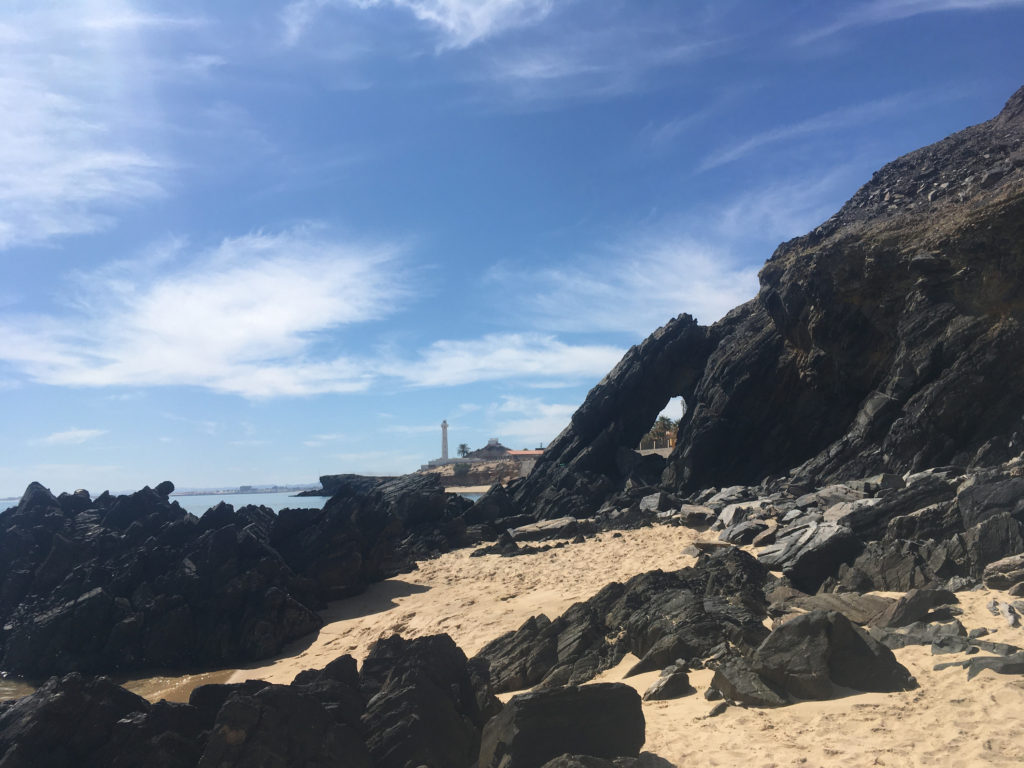
Heading down onto shrine steps we skirt around the back of an abandoned disco. Taking the bridge to town, we stop to watch fishing boats bringing in catches. Fishermen in blue and yellow, red and yellow and plain yellow waders. Tow vehicles slip on the wet concrete ramp. A man standing to one side jumps in to help the crew push. The captain throws out a couple of fish as thanks.
Downtown San Felipe
Wandering along the Malecon, we quickly discover that a big biker rally – the Corrida de Baja – is due in town for the weekend. Over 1000 motorbikes are expected of every shape and size. We grab a streetside table at one of the restaurants to watch as the parade starts to roll into town. Most are Harleys. A few sport bikes come through and as the street fills up and the flow of traffic slows, they start burning tires and fill the air with acrid rubber smoke. Quads join ranks as do a few dirt bikes. The feeling is festive not threatening in the middle of the afternoon. We wander back to camp before sunset and climb up to the second story of the palapa.
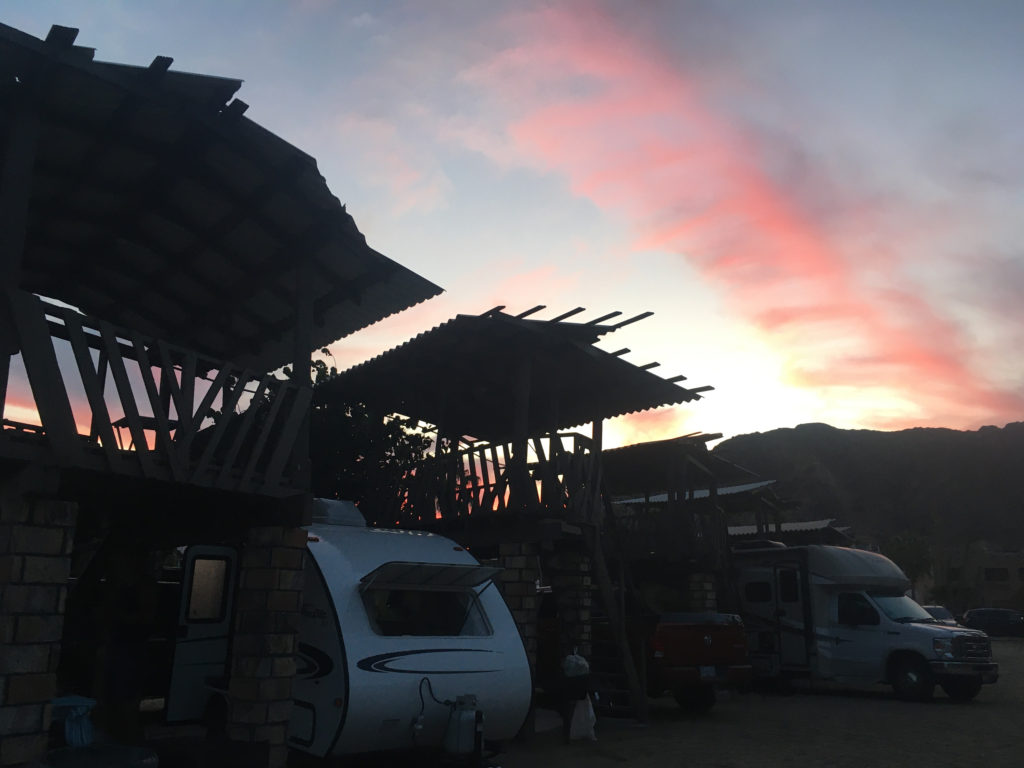
The warm, not hot heat of the winter sun fills the soul. Birds sing. Palm trees rustle in a light breeze. Crimson pink light hits the water as we sit on the upper deck of our palapa, feet up and drink in hand.
Oh yeah, this is the dream!
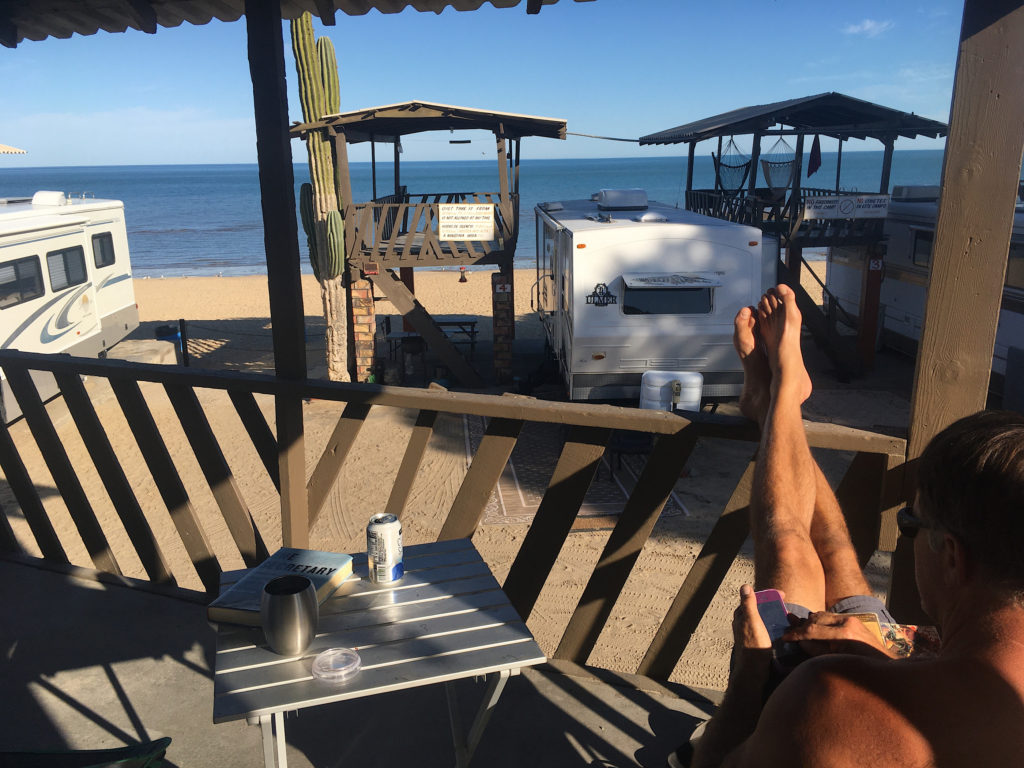
Love to Go, But I Don’t Speak Spanish
I could say learn before you go (highly recommend Duolingo – and no, it’s not an affiliate!), but in reality, English is widely spoken throughout Baja’s major centers. That being said, it’s important to have a basic understanding of road signs when driving your RV along the peninsula.
A Few Road Sign Translations
Alto= Stop
Tope= Bump or Speed Bump
Peligroso= Dangerous
Curva peligrosa= Dangerous curve
Cuidado= Caution
Despacio= Slow
Disminuya su velocidad= Slow down
No rebase= No passing
Prohibido el paso= Do not pass
Cruse de peatones= Pedestrian Crossing
No hay paso= Road closed
Desviacion= Detour
Entrada= Entrance
Salida= Exit
Izquierdo= Left
No maltrate las senales= Do not disregard the signs
Derecha= Right
When You Go
Even though your Canadian or U.S. auto and RV insurance may cover you for collision, you still must buy liability insurance from a Mexican insurance broker for your Baja RV Adventure. There are many to choose from, we used ADA VIS Global.
For current updates on border crossings, start with this page on Baja Bound.
If you’re still not comfortable with the idea of travelling to Baja on your own, consider joining a caravan such as Baja Amigos or Vagabundos del Mar.



Interesting article Megan. Looking forward to reading Part 2.
Thanks, Angie! Love to meet up with you guys down there one day.
Great post! Very informative and beautifully laid out. Thanks for sharing.
Thx Jackie!
Lovely place, especially that beach. Would love to visit there!
I hope you get the chance to visit one day!
Actually there isn’t a Baja California Norte. It’s just Baja California & Baja California Sur. An enjoyable article. Can’t wait to get back down.
Appreciate the clarification – thanks!
Sitting in San Felipe right now. Love coming down here. Very laid back. Always feel safe as there is a big police presence. People are always friendly. We stay at Club de Pasco. Lots of American and normally Canadians.
Happy for you, Dina – enjoy the peace that comes with this special place!
Enjoyed your article, I hope to go there next year!
Thank Loretta, I you hope you do get the chance to visit Baja!
Id like to caravan along with some good people to San Felipe. I have f250 and 32’ 5th wheel. Ive read a lot about San Felipe im thinking I might just stay there. I’m 67 widower of 39 years. Looking for a peaceful and enjoyable life in a beautiful place.
Be sure to check out the “When You Go” section for caravan info!
Ok thank you 😎
caravanas de mexico, a mexican based caravan company is now doing Baja trips bajacaravans.com. Baja amigos is another option. I am not sure if baja winters is going to survive, it got sold
Good to know for those who enjoy travelling in groups with like-minded people!